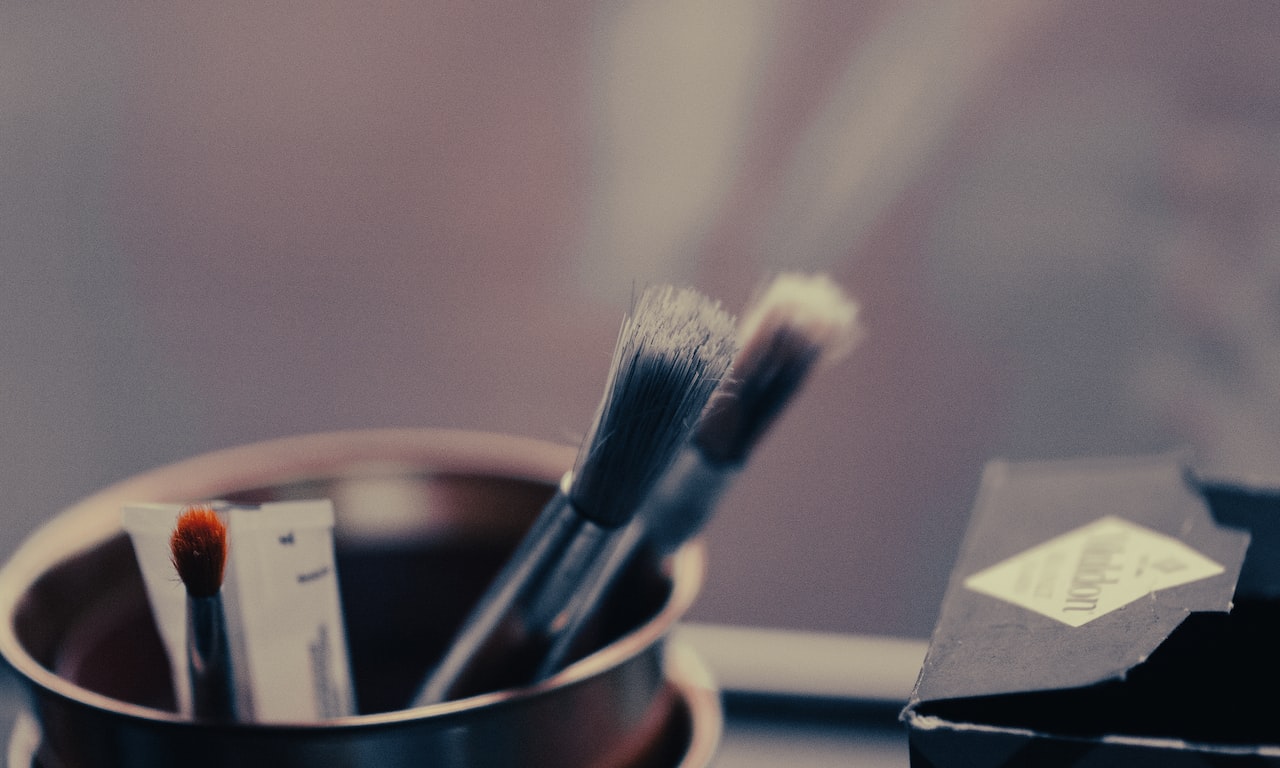Chapter I
The Art of Cleaning a Hydration Bladder
Amidst the pursuits of a life filled with outdoor adventures and the necessity of maintaining one’s hydration apparatus, there lies a task most needful – the cleaning of one’s hydration bladder. To embark upon this endeavor, one must first and foremost select the proper cleaning accouterments.
Section A
In Gathering the Requisite Cleaning Paraphernalia
Before venturing into the domain of cleansing one’s hydration bladder, it is of utmost importance to gather the necessary cleaning materials. This ensures a thorough and safe process, preserving the purity of the water source. The following items are indispensable for this purpose:
- A mild, unscented dish soap or, more ideally, specialized hydration bladder cleaning tablets. These tablets, exquisitely crafted for the task, shall leave no lingering flavors.
- A long and flexible cleaning brush, oft provided with hydration bladders or available separately.
- Warm water, a liquid elixir suitable for the purpose. The use of hot water is strongly discouraged, for it possesses the potential to harm the bladder’s material and seals.
- A drying rack or a suitable hanger to permit the bladder to be gently caressed by the air, drying it completely.
With these materials assembled in advance, the process of cleaning shall be rendered more efficient, and the longevity of one’s hydration bladder preserved in all its pristine condition.
Section B
In Verifying the Suitability of the Cleaning Materials
Not all cleaning materials are fit for use with hydration bladders, for some possess the capacity to inflict damage upon the materials or leave behind deleterious residues. To safeguard the integrity of one’s hydration bladder, one must adhere to the following precepts:
- Ensure, in a most fastidious manner, that the dish soap or cleansing tablets to be employed bear explicit labels designating them as safe for the cleansing of hydration bladders. Harsh and noxious chemicals, should they be employed, have the potential to precipitate the degradation of the bladder’s interior lining.
- Abstain from employing bleach, vinegar, or other potent cleaning agents, for these substances may induce harm and leave lingering odors or tastes within the bladder’s confines.
- Assure yourself that the cleaning brush you employ is both soft in texture and specifically designed for the cleansing of hydration bladders. Coarser or abrasive brushes bear the potential to abrade the interior, compromising its integrity.
- After the cleansing is concluded, a most diligent rinsing of the hydration bladder must be undertaken. This ensures the complete eradication of any vestiges of the cleaning solution, the presence of which may, in future endeavors, affect the flavor of one’s water.
By adhering steadfastly to these precautions, one shall be the guardian of their hydration bladder’s longevity, and the quality of hydration on outdoor excursions shall remain untarnished. Thus, the art of cleaning a hydration bladder is perfected, and the quest for pure and unadulterated water continues unabated.
Disassembly of the Hydration Bladder: A Proper Endeavor
In the realm of cleanliness and maintenance for one’s hydration bladder, the most delicate of tasks lies in the proper disassembling of this essential contraption. One must, indeed, adhere to a meticulous set of instructions for this purpose:
Extraction of the Hose and Bite Valve
Commence your endeavor by disjoining the hose from the body of the bladder. Most ingeniously, the majority of hydration bladders feature a quick-release mechanism, which facilitates the detachment of the hose with utmost ease. Following this separation, it is incumbent upon you to delicately pull off the bite valve from the hose’s terminus. Subsequently, it is essential to rinse both the hose and the bite valve with warm water, thus purging them of any lingering residue.
Unsealing the Bladder and Draining Its Residual Elixir
Next in your sequence of tasks, you must ascertain the location of the bladder’s orifice. Typically, it presents itself in the form of a screw cap or an aperture sealed by means of a slide-top contrivance. To gain access to the inner sanctum of the bladder, one must either unscrew the cap or partake in the gentle opening of the closure. With the utmost care, discharge any remaining liquid contained within the bladder. In this endeavor, a measure of caution is advised, lest you commit the inadvertent spillage of its contents upon your person or the surrounding environment.
The Inversion of the Bladder’s Innermost Self (When Feasible)
Should your hydration bladder be endowed with the remarkable quality of reversibility, seize the opportunity it presents. In the gentlest of manners, turn the bladder inside out, thereby unveiling its innermost surface. This ingenious maneuver not only permits a more thorough cleansing but also ensures a complete and unfettered drying process. It is prudent to note, however, that not all bladders are amenable to such inversion. Therefore, it is incumbent upon you to consult the instructions provided by the manufacturer prior to embarking on this particular stage of the undertaking.
Cleaning the Components with Precision
Dear reader, when it comes to the art of maintaining one’s cherished water vessel, it is of paramount importance to bestow one’s attention upon each component. This, my dearest companions, ensures the vessel’s impeccable hygiene and unyielding longevity. Allow me to elucidate, in the gentlest manner, the most effective methods for cleansing the diverse parts of your water receptacle:
Gently Cleanse with Warm, Soapy Waters
Primarily, the initial step in purifying your vessel is to bestow upon it a tender hand wash, employing the warmth of soapy waters. This approach, I must declare, is well-suited to vessels crafted from a variety of materials, whether they be of plastic, stainless steel, or even the most delicate glass. Equip yourself with a sponge or a bottle brush, and, with due care, commence the gentle scrubbing of both the inner and outer realms of the bottle. In this endeavor, pay meticulous heed to regions that may have encountered libations or residual substances. Subsequently, employ a liberal rinse with clean waters, assiduously removing any lingering traces of soap.
Examine the Hose and Bite Valve with a Long Brush or Specialized Apparatus
Should your water receptacle be adorned with a hose and bite valve, it becomes a matter of the utmost importance to cleanse these elements separately. In this undertaking, one ought to employ an elongated brush, or perhaps a specialized cleaning contrivance tailored to the peculiarities of hydration systems. With care and diligence, navigate the labyrinthine pathways within the hose and valve, ensuring the expulsion of all vestiges of residue. Pay particular heed to the bite valve, and consider the employment of a petite brush or toothpick to dislodge any obstinate debris. Following this process, render a thorough rinse, and permit these components to repose in the ambient air, allowing their moisture to dissipate before reassembling them with the utmost care.
Contemplate the Use of Specialized Cleaning Elixirs or Tablets
In addition to the routine ablutions, it is prudent to entertain the prospect of employing specialized cleaning elixirs or tablets, crafted for the sole purpose of preserving the immaculacy of your cherished vessel. These remarkable products, dear reader, are fashioned to eradicate with unwavering efficacy any lurking specters of bacteria, mold, or odors. In this pursuit, one must assiduously adhere to the instructions that accompany the employment of these cleansing tablets or solutions, so as to ensure a safe and efficacious application. It is of the utmost importance to bear in mind that, after employing these miraculous elixirs, a thorough rinse of the vessel is requisite, to dispossess it of any lingering traces of the cleansing agents.
Drying and Storing
Properly drying and storing your components is of utmost importance for their longevity and functionality. Here are some essential tips to follow:
Allow components to air dry
After employing your components, it is imperative to allow them to air dry thoroughly. This measure is vital in preventing moisture from causing damage or corrosion. Take care to disassemble the parts if necessary, permitting each fragment to dry completely before reassembly. This simple step can significantly prolong the life of your equipment.
Avoid direct sunlight or heat sources
Subjecting your components to direct sunlight or heat sources can result in overheating, warping, or other forms of damage. It is advisable to store your components in a location where they are shielded from direct sunlight and kept away from heaters, radiators, or any other heat-emitting devices. This precaution will help preserve their structural integrity.
Store in a cool, dry place
Selecting the appropriate storage environment is crucial in preventing deterioration. Components ought to be stored in a cool, dry place. Excessive humidity can lead to rust and corrosion, while extreme temperatures can adversely affect their performance. Employ airtight containers or bags to provide additional protection against environmental factors. Remember, a proper storage location can make a significant difference in the long-term reliability of your equipment.
Preventative Maintenance
Maintaining your hydration bladder is of utmost importance to ensure it continues to serve you effectively and reliably. Here are three key steps to keep your hydration bladder in top condition:
Rinse and Dry Your Hydration Bladder After Each Use
After each delightful adventure, it is of great consequence to cleanse your hydration bladder thoroughly. Commence by emptying any remaining liquid and then rinse it with fresh water. You may employ a specialized cleaning kit or concoct a gentle mixture of water and mild soap to eradicate any residue or odors. Be sure to rinse all components, including the hose and bite valve. After the rinsing process, allow the bladder and its components to air dry completely. This prudent measure shall prevent the insidious growth of mold and mildew, thereby preserving the freshness of your bladder for its next use.
Use a Dedicated Bladder for Specific Liquids
To prolong the life of your hydration bladder and uphold its impeccable performance, it is advisable to employ a dedicated bladder for specific types of liquids. For instance, if you predominantly utilize your bladder for water, abstain from filling it with saccharine sports drinks or beverages that may leave behind residues that are arduous to cleanse. By adhering to this practice, you shall effectively avert the accumulation of unsightly gunk and ensure your bladder remains unsullied and devoid of unpleasant odors.
Regularly Inspect for Wear and Tear, Replacing Damaged Parts
To guarantee the optimal functioning of your hydration bladder, it is incumbent upon you to conduct periodic inspections for any signs of wear and tear. Scrutinize the bladder, hose, and bite valve for any indications of damage, such as leaks, cracks, or unusual signs of wear. Should you discern any such issues, it is crucial to address them promptly. Replace damaged parts forthwith to prevent leaks and uphold the integrity of your bladder. By faithfully adhering to a regimen of regular maintenance and timely part replacement, you shall successfully avert any inconvenient surprises during your delightful outdoor pursuits.
FAQs – How to Clean a Hydration Bladder
Q: What cleaning materials do I need to clean a hydration bladder?
A: To clean a hydration bladder, you will need mild, unscented dish soap or specialized hydration bladder cleaning tablets, a long and flexible cleaning brush, warm water, and a drying rack or suitable hanger.
Q: Can I use hot water to clean a hydration bladder?
A: No, it is strongly discouraged to use hot water as it can harm the bladder’s material and seals. Warm water is recommended for cleaning.
Q: Can I use bleach or vinegar to clean a hydration bladder?
A: No, it is not recommended to use bleach, vinegar, or other potent cleaning agents as they may cause harm and leave lingering odors or tastes in the bladder.
Q: How should I clean the hose and bite valve of a hydration bladder?
A: The hose and bite valve should be rinsed with warm water and cleaned using a long brush or specialized cleaning apparatus. Pay attention to the bite valve and consider using a petite brush or toothpick to dislodge debris.
Q: Should I use specialized cleaning elixirs or tablets?
A: Specialized cleaning elixirs or tablets can be used to effectively remove bacteria, mold, and odors from a hydration bladder. Follow the instructions provided with the cleaning product and rinse the bladder thoroughly afterwards.
Q: How should I store my hydration bladder components?
A: Components should be allowed to air dry completely before storing them. Avoid direct sunlight or heat sources, and store them in a cool, dry place using airtight containers or bags for additional protection.
Q: How often should I clean and maintain my hydration bladder?
A: It is recommended to rinse and dry your hydration bladder after each use. Regular inspections for wear and tear should also be conducted, and damaged parts should be replaced promptly.











